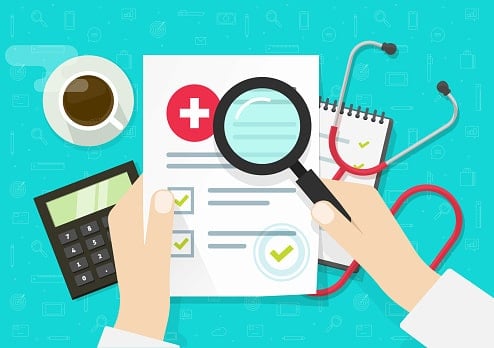Why buy short term care insurance?
If you are unable to take care of yourself, even for a short period of time, the cost of care can add up quickly.
The Administration for Community Living found that the national average costs of care include:
- $225 a day or $6,844 per month for a semi-private room in a nursing home.
- $253 a day or $7,698 per month for a private room in a nursing home.
- $119 a day or $3,628 per month for care in an assisted living facility (for a one-bedroom unit).
- $20.50 an hour for a health aide.
- $20 an hour for homemaker services.
- $68 per day for services in an adult day health care center.
Short-term care coverage can help you with these kinds of costs. Plans will pay between $100 and $200 each day to help with the cost of care.That’s $6,000 a month to offset costs.
Among the biggest selling points of this limited coverage is the price. Here are typical premium costs, according to the American Association for Long-Term Care Insurance, a trade group:
- Age 65 with home care coverage only: $63 a month
- Age 65 with home care and nursing home benefit: $125 a month
Short-term care also pays in addition to Medicare, while long-term care insurance doesn’t.
Simplicity is an advantage to short-term care. There’s no medical exam required, so the application process is faster and simpler, compared to the process for long-term care insurance. Typically, applying for short-term care involves just filling out a short questionnaire. You can also still buy short-term insurance up to age 89, while most long-term care policies cut off applicants at about age 75.
Applications usually have less than 10 health questions. The company approves or denies you based on how you answer those questions.
It might be harder for you to find a short-term care plan than a decade ago. The long-term care insurance market is shrinking. According to a 2022 National Association of Insurance Commissioners (NAIC) report, the number of insurance companies offering long-term care has dropped. Only a dozen or so companies sold such policies in 2020 compared to over a hundred in 2004.
How does short-term care insurance work?
It’s pretty straightforward: you pick a benefit amount, usually offered in $10 increments from $50 to $300 per day, and the number of days (up to 360) that you want to receive the benefit.
The majority of policies go into effect immediately. That means the policy pays on the very first day you qualify for benefits. Most traditional long-term care insurance policies (about 94%) are sold with a 90-day deductible that must be met before benefits are paid.
The triggers for benefit eligibility for short-term care insurance generally are the same as they are for long-term care coverage. The policy pays for care when the insured can't perform at least two of six "activities of daily living" without help -- eating, bathing, transferring in and out of a chair or bed, dressing, toileting, and continence -- or has a cognitive impairment.
Health insurance finder tool

COBRA
Learn more about COBRA
How much is your annual household income?
How many members are in your household?
Medicare
Medicare costs vary depending on which option you choose.
Learn more about Medicare costs.
Medicaid

Parent's employer-sponsored health insurance

Spouse's employer-sponsored health insurance

Employer-sponsored health insurance

Preferred-provider Organization (PPOs)
Preferred-provider organization (PPOs) plans are the most common type of
employer-based health plan. PPOs have higher premiums than HMOs and HDHPs, but
those added costs offer you flexibility. A PPO allows you to get care anywhere
and without primary care provider referrals. You may have to pay more to get
out-of-network care, but a PPO will pick up a portion of the costs.
Find out more about the differences between plansHealth maintenance organization (HMO)
Health maintenance organization (HMO) plans have lower premiums than PPOs.
However, HMOs have more restrictions. HMOs don't allow you to get care outside
of your provider network. If you get out-of-network care, you'll likely have to
pay for all of it. HMOs also require you to get primary care provider referrals
to see specialists.
Find out more about the differences between plansHigh-deductible health plans (HDHPs)
High-deductible health plans (HDHPs) have become more common as employers look
to reduce their health costs. HDHPs have lower premiums than PPOs and HMOs, but
much higher deductibles. A deductible is what you have to pay for health care
services before your health plan chips in money. Once you reach your deductible,
the health plan pays a portion and you pay your share, which is called
coinsurance.
Find out more about the differences between plansExclusive provider organization (EPO)
Exclusive provider organization (EPO) plans offer the flexibility of a PPO with
the restricted network found in an HMO. EPOs don't require that members get a
referral to see a specialist. In that way, it's similar to a PPO. However, an
EPO requires in-network care, which is like an HMO.
Find out more about the differences between plans
Learn more about individual insurance plans
Short-term care buyers: Who are they?
For some buyers, short-term care policies are a good addition to traditional long-term care insurance because they provide some protection for that 90-day period when you need care. For others who either waited too long to buy long-term care and are now priced out or for those who can’t afford it all but want some protection, short-term care is an affordable option.
It is true that some long-term care claims last for many years; however, almost half (49%) of long-term care insurance claims last one year or less, according to the short-term care advisory center.
The American Association for Long-Term Care Insurance suggested people who may be interested in short-term care insurance include:
- A person declined traditional long-term care coverage.
- Someone who wants a cheaper alternative to traditional long-term care insurance.
- People over 80 years old.
- Those who want to cover the elimination period in your long-term care policy.
Depending on the company, you must be somewhere between 40 and 89 years old. Some companies limit applicants further and don’t offer coverage after age 85.
As with any insurance purchase, research companies carefully. Some insurers are much easier to work with when it comes time to file claims than others. Look at company track records for complaints, and read the fine print to find out exactly what is covered and what isn’t. You’ll also want to decide how much you can pay yourself for care when calculating how much coverage you’ll need.
Frequently asked questions
what is short term care insurance?
Short-term health insurance policies offer coverage for less than one year. The coverage is not as robust as that of a standard health insurance plan. For example, a short-term plan may not offer as many benefits as a typical one. It might also lack some consumer protections.
Is short term care insurance for seniors?
Short-term care insurance is designed to provide coverage for seniors who need assistance with daily living activities for a limited period, usually up to one year. It helps cover the costs associated with short-term care services such as nursing home care, assisted living facilities, or in-home care. This type of insurance can be beneficial for seniors who may not require long-term care but need temporary assistance due to illness, injury, or recovery from surgery.












